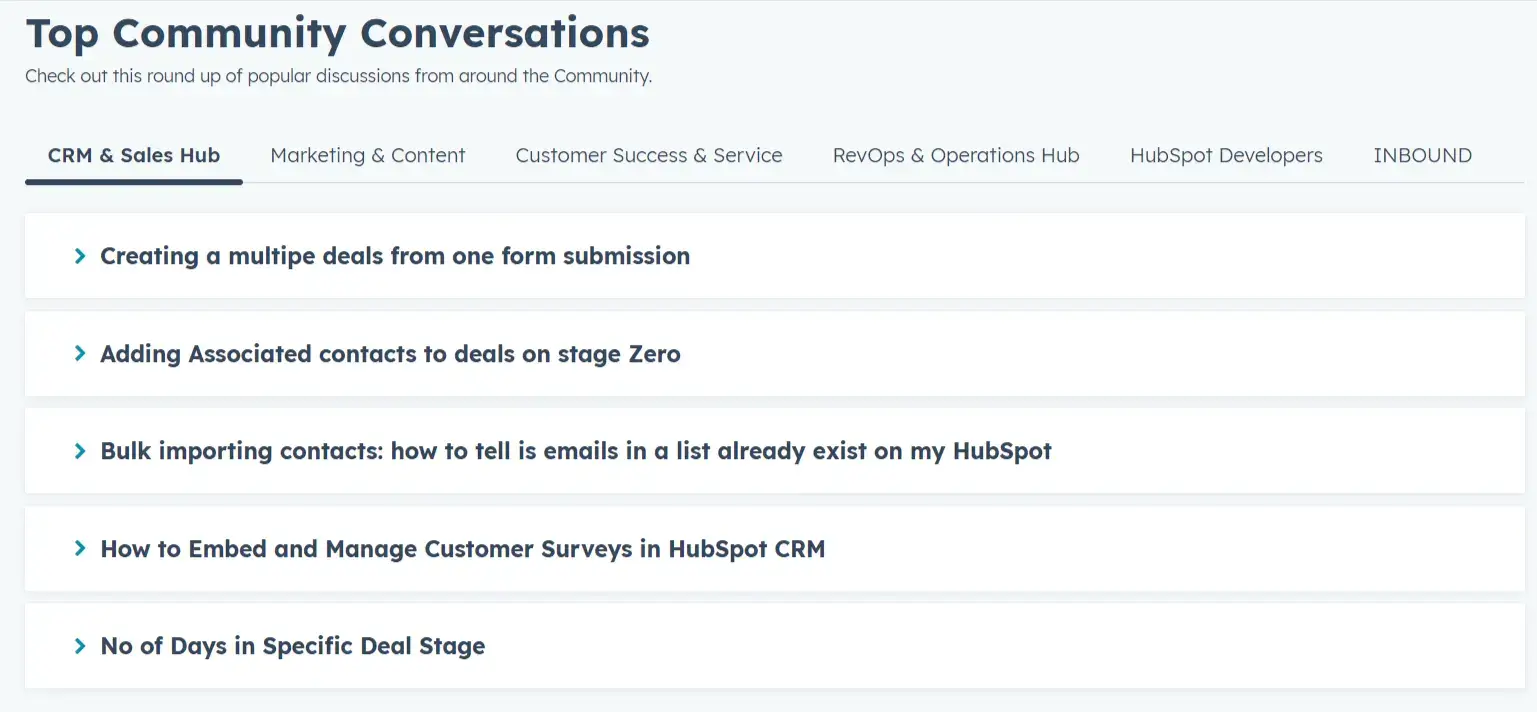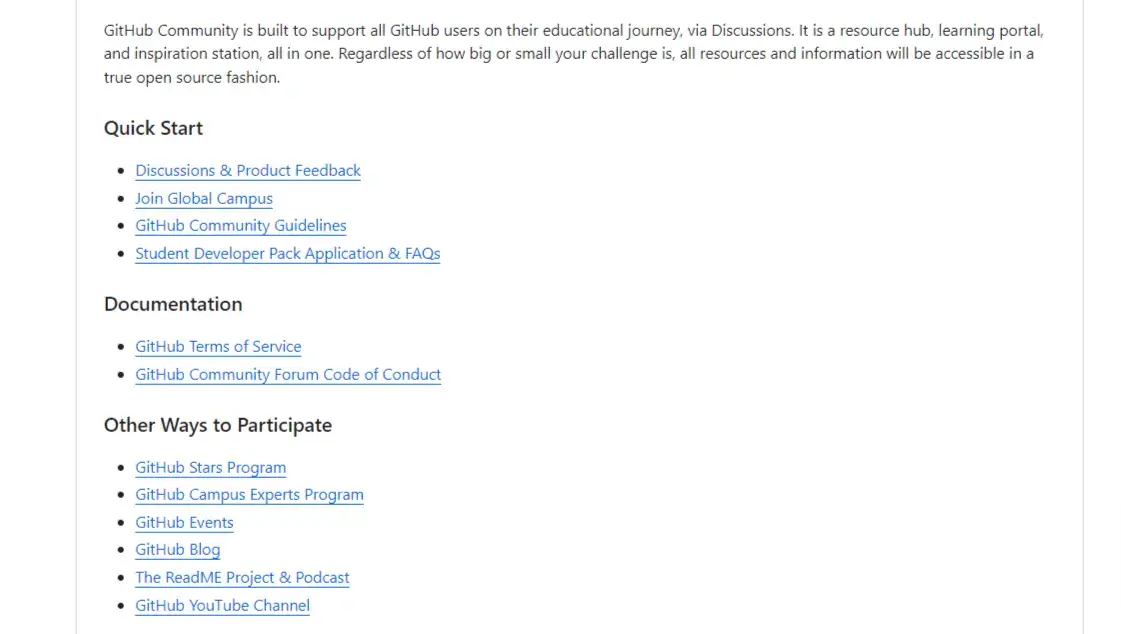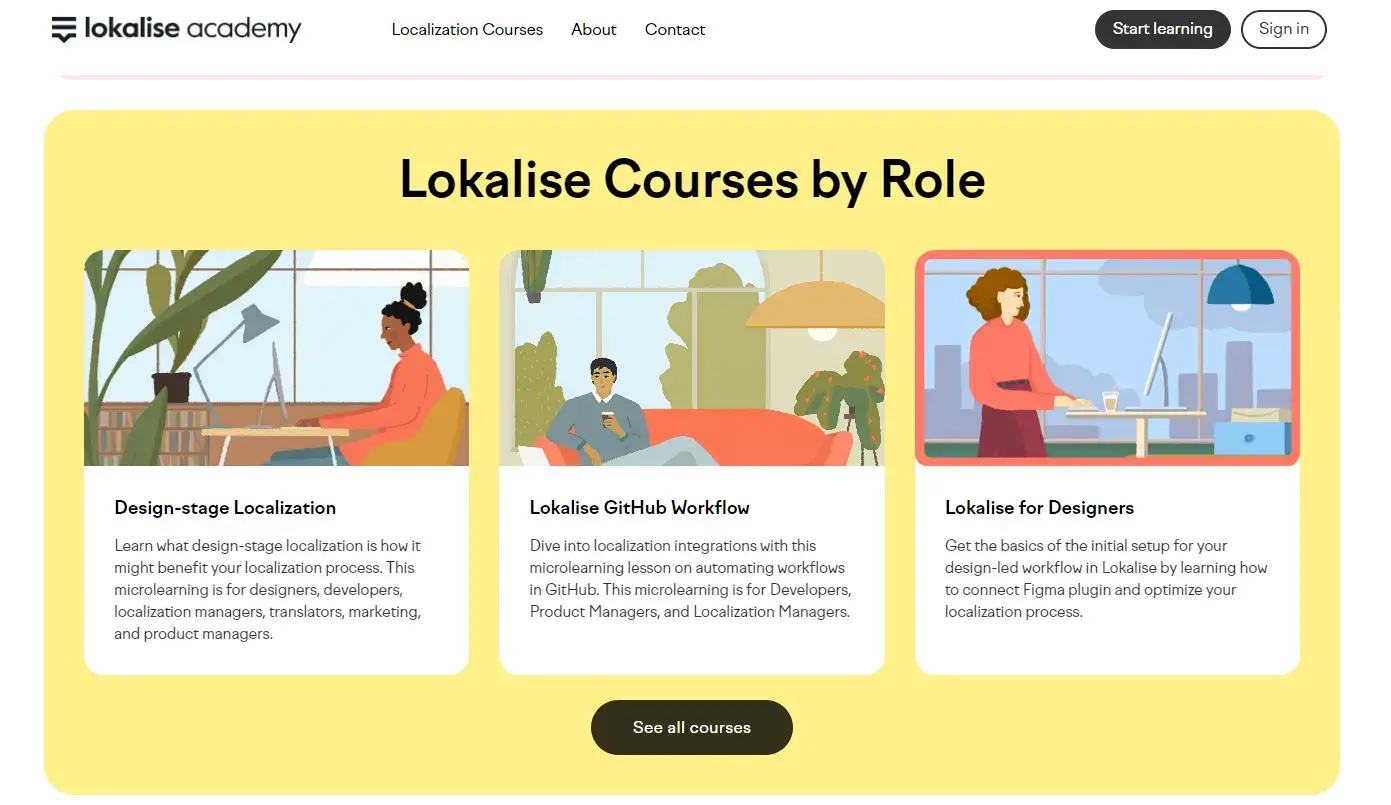Table of Contents
Confession time: When I first began my marketing career, I didn’t focus much on building communities.
My initial approach was more traditional—centered around campaigns, content, and metrics. However, as time went on, I realized I was building communities unintentionally.
It wasn’t a deliberate effort but rather the natural outcome of engaging with people, fostering connections, and creating spaces where customers and brand followers could come together. This unexpected journey led me to understand the immense value that online communities hold for both marketers and businesses.
But what is the official definition of an online community? Let’s find out.
What is an Online Community?
According to the Cambridge English Dictionary, an online community is “a group of people who use the internet to discuss interests that they share or to try to achieve something together.”
This definition summarizes the essence of what makes online communities so powerful: They’re about more than just numbers; they’re about shared interests, collective engagement, and sustained interaction.
One thing I’m noticing this year is that online communities are now a must for many businesses across different industries.
You can build a community around anything, be it a product, newsletter, service, or simply a vision and mission you have. Such communities allow businesses (like yours!) to build deeper relationships with their customers, foster brand loyalty, gather valuable insights, and drive engagement beyond the reach of traditional marketing methods.
But let me dive deeper into how you can use them as platforms for authentic conversations, feedback loops, and user-generated content.
Understanding Online Communities as They Truly Are
Unlike passive audiences, members of online communities actively participate in discussions, share ideas, create content, and provide direct feedback. Value is co-created by both the community creator or business owning the community and the community’s members, fostering relationships and ongoing dialogue that enhance the community experience.
Growth is naturally more organic and sustainable, fueled by member engagement, referrals, and a strong sense of belonging. This dynamic environment provides a continuous feedback loop, allowing for more immediate adaptation and improvement.
Beyond its members and common ground, three other core elements constitute the foundation of a lasting community:
Such resources could be exclusive content from articles, ebooks, webinars, courses, quizzes, or even podcasts.
Different Types of Online Communities to Consider
Online communities vary in their structure, shared purpose, and membership rules. Here are some of the most common types I recommend you consider:
1. Customer Communities
Customer support communities allow brand customers to connect, share experiences, provide feedback, and support each other. These online communities can be hosted on various platforms, such as a company’s website or social media. The goals? Strengthening relationships between the brand and its customers, enhancing engagement, and promoting advocacy.
Checklist to create a customer community:
Customer community example:

HubSpot is a SaaS company hosting its custom HubSpot Community on its website to share assets through discussion forums, knowledge bases, and user groups.
The community is structured with sections for product discussions, idea submissions, sub-communities, and access to other resources. The community is actively moderated and HubSpot promotes it through channels like email, social media, and in-app messaging.
2. Brand Communities
A branded online community acts as a professional network or groups of customers who share a strong common interest and emotional connection with a brand, focusing on its values, culture, and experiences.
These communities foster a sense of belonging and identity among members, who actively engage with both the brand and each other. Unlike customer communities that may emphasize support and product use, brand communities build deeper emotional ties and shared experiences (besides brand awareness).
Checklist to create a brand community:
Brand community example:

The GitHub Community serves users of GitHub’s development platform but facilitates engagement beyond the product. Developers use forums and discussion boards to connect, share, collaborate on projects, ask questions, provide answers, and access resources on GitHub’s tools and best practices.
3. Professional or Learning Communities
Professional and learning communities enhance members’ skills and professional development by offering platforms for networking, knowledge sharing, and collaboration.
Professional communities emphasize career advancement through industry insights and networking, while learning communities focus on continuous education with resources like workshops and courses. The benefits of online communities for learning include access to industry knowledge, skill development, networking opportunities, and exclusive resources.
Checklist to create a professional or learning community:
Professional or learning community example:

Lokalise used LearnWorlds to transform Lokalise Academy into the premier online learning hub for localization, internationalization, and growth. The platform’s intuitive interface, straightforward course creation tools, and robust community-building features were the main factors that drew the Lokalise team’s interest.
Notice how these examples of online communities differ from the social communities you might be used to. Here’s a comparison table to highlight these differences:
💁 Want to learn more? Explore more types of online communities, examples and stats here.
The Endless Benefits of Building an Online Community
Online communities foster direct interaction between brands and their customer base, encouraging meaningful conversations and feedback. Building a community also helps develop a sense of belonging among members, which can lead to stronger emotional connections with the brand.
Not sure how to get to know your target market better?
Communities offer a direct channel for gathering customer feedback and suggestions, answering questions, helping businesses improve products and services. And if you’re looking for a cost-effective marketing solution, organic growth within a community will significantly reduce your advertising expenses.
But you already know this. So, let me tell you how an online community will help you differentiate your brand within any industry—one step at a time.
1
Use Online Communities to Stand Out
Having a strong community can be a differentiator. I’ve worked with several companies that managed to sell the product through one core value proposition: “Our support and community is better than what competitors are offering.”
And there are different facets to this.
You can simply work to provide the best community support ever. Or you can use your existing community or social network (see Facebook Group), to gather unique customer insights that will help you tweak your product and offering in the future. This takes me to…
2
“Building” Brand Advocates and Loyalty
Engaged community members often become passionate brand advocates. They’re more likely to share their positive experiences, create user-generated content, and recommend your brand. This organic, authentic promotion is far more powerful and cost-effective than traditional advertising, giving you a competitive edge in brand perception and trust.
3
Making for a More Human Brand
Okay, so this is related to any business owner’s continuous mission to stand out, but bear with me: Customers want brands to be more human.
An active community puts a human face on your brand. Regular interactions, behind-the-scenes content, and personal responses from team members create a more relatable, approachable brand image. This emotional connection is a powerful differentiator in industries where products or services may be similar.
4
Faster Building and Problem Solving
Your community members can become active participants in your brand’s evolution. A thriving community can serve as a first line of support for customers.
Members often help each other troubleshoot issues or share tips, reducing the load on your customer service team. This peer-to-peer support network improves customer satisfaction and demonstrates your brand’s commitment to fostering a helpful, knowledgeable user base.
There’s also an innovation note to this.
By involving your community in product development, feature requests, or even marketing campaigns, you create better offerings and foster a sense of ownership among your customers. This collaborative approach sets you apart as a brand that listens and adapts to its audience’s needs.
Key Elements of a Successful Online Community
But communities weren’t always like this.
Fast-forward to the time of in-person communities: The 2000s brought the rise of social media platforms like Facebook, Reddit, and Twitter, which shifted online communities from niche groups to large-scale networks with millions of members. Over time, these platforms evolved to offer more tools for user interaction, such as likes, shares, and instant messaging, which enhanced engagement.
Today, online communities exist on many platforms, from specialized forums like Stack Overflow to Discord servers, Slack workspaces, and online course platforms such as LearnWorlds—each fostering connections around shared interests, hobbies, learning or professional goals.
So, virtual communities will naturally change over time.
To avoid ending up with a “dead” online community, you should take into account a triad of elements: active members, regular content, and clear guidelines.
But we’re not done yet. No matter how good your virtual community content is, encouraging participation and engagement within the community remains a common challenge you need to push through.
Good engagement starts with the first impressions. How your community looks and what kind of members you have will instantly attract or deter potential members.
Fun fact: That’s why the strongest online communities have an onboarding process that introduces newcomers to the rules, key members, and available resources. Some even designate community ambassadors or set up “welcome” threads to make new members feel comfortable.
Another way to increase engagement while building an online community is to start incorporating user-generated content first. Empower members to share their experiences or expertise and highlight this content in newsletters or pinned posts. I’d like to stress the importance of UGC over the content your brand shares as a core pillar for driving authenticity.
Finally, let me share a little secret about how I like to use online communities: For building relationships.
Hosting virtual events like Q&A sessions, webinars, or casual chats helps members connect with one another. Encouraging members to form subgroups based on specific topics or interests also fosters tighter bonds. That’s what brings people back to talk to their peers, set up a quick call, or even find a new job.
How to Build an Online Community From Scratch
Now that we’ve clarified what online communities are and how they can benefit you, let’s walk you through the step-by-step process of building one from the ground up.
Step 1: Define the community’s purpose and audience
Decide on your community’s goal and the audience it will serve. Research to understand their needs and interests, which will help shape the community’s focus and attract the right members.
Step 2: Choose the right platform
Selecting the right platform is crucial. LearnWorlds is an excellent option for creating a branded and engaging community. Unlike other platforms, LearnWorlds provides full control over your community’s design, features, and interactions. It offers robust tools like a dedicated community dashboard, custom roles, discussion boards, and content sharing, making it ideal for nurturing engagement.
Step 3: Set up your community
Customize your community to reflect your brand by setting clear guidelines and objectives. In LearnWorlds, you can create interactive spaces and collections, organize discussions, and add third-party tool integrations for enhanced functionality.
Step 4: Engage and grow your community
Once set up, promote engagement by initiating discussions, asking questions, sending surveys, and creating opportunities for interaction. Use features like polls, events, and user profiles to boost participation.
Step 5: Manage and scale
Assign custom community roles (like a community manager) to delegate tasks and ensure smooth operation. LearnWorlds also provides advanced management tools for monitoring spaces and member activity.
💡For a detailed guide, check LearnWorlds’ community-building support resources.
Next Steps: Managing and Growing Your Online Community
If there’s one thing I learned the hard way, it’s that building a thriving community requires ongoing management. The easiest way to tackle this is not to be spontaneous like I did. Instead, you want a clear strategy to maintain engagement and attract new members.
Partnerships with organizations or industry leaders who share your target audience can help you introduce their followers to your community.
You can also consider your community a stand-alone product. Encourage your current members to invite friends, colleagues, or like-minded individuals by offering referral bonuses, exclusive content, or special recognition. Creating a referral program with incentives like discounts, gifts, or access to premium content can motivate members to spread the word.
And social media is always a viable last resort for promoting community events. Provided you have a strong following there too.
Online communities offer businesses a direct connection to their audience, facilitating customer engagement, feedback, and loyalty. A well-managed community can enhance customer support by allowing users to assist each other, reducing strain on support teams.
It also fosters brand loyalty, as valued members are more likely to become long-term customers and advocates. Businesses benefit from real-time feedback on products and trends, and engaged communities help build trust, drive repeat purchases, and provide opportunities for upselling and cross-selling.
Ready to Build and Grow Your Online Community?
LearnWorlds is the perfect platform to create branded online spaces for your customers or students. Whether you’re interested in a learning platform or a business community, LearnWorlds offers all the tools you need, from easy-to-use course creation features to interactive community spaces.
Sign up for a free trial of LearnWorlds and take the first step toward creating a community that will drive your business growth! Start fostering meaningful connections and increasing engagement in just a few clicks.
Further reading you might find interesting:

Alexandra Cote
Alexandra Cote is a SaaS growth marketer and online instructor who's worked with dozens of brands in the MarTech, HR tech, and productivity space. She's also a strong supporter of staying happy at work and choosing a healthy career path.

